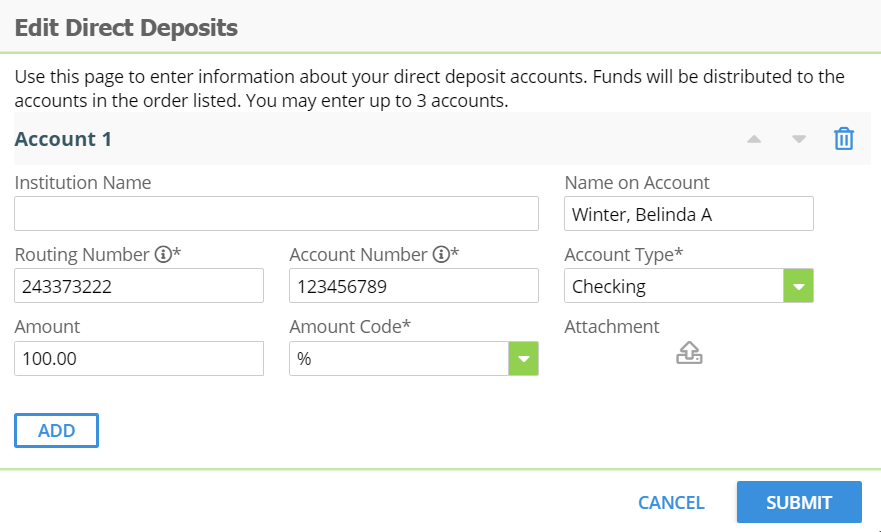
This article will explain how to trade commodities. This guide will teach you the basics of investing in commodities, including trading on margin and understanding price charts. Futures and options contracts are also covered. This guide will help you make informed decisions about which commodity to trade, and when. The information you have learned can be applied to other markets such as stocks, bonds and futures.
Direct investment in the commodities
Investing in commodity futures contracts directly can provide exposure to the market without the need for raw material. Futures contracts are not risky and can be a great option for diversification. Many investors also invest in commodity-based exchange traded funds (ETFs), which can be invested in a variety of commodities. Investors who wish to participate in the commodity markets without actually owning the commodity can also use commodity-related mutual funds.

Margin trading in commodities
When you trade on margin for the first time, your initial capital (or monetary reserve) will be called your margin. It could be as small as $5, or as large as $150,000. In both instances, the higher the initial margin, the greater the potential profit. In either case, it is essential to know how to properly utilize margin. Below are the steps that you need to follow when using margin. You can read more about it if you are unsure.
Understanding the price charts
Learning how to read price charts is essential if you are to make a profit with commodities. These charts are a visual representation of the history of a particular commodity. Although technical indicators are sometimes confusing, you should understand the three main variables. Volume, price and open interest are the three main variables you need to understand. Open interest allows traders to gain insight into the trading activity of a specific commodity.
Investing with options and futures contracts
Investing in options or futures contracts can help you protect against fluctuating commodity prices. These fluctuations in the commodity market may make speculators rich. However, futures are risky investments, and they may not be suitable for all investors. These contracts also have restrictions on redemption and high fees. Before investing in futures and options contracts, you should know your financial status. Futures trading should only involve risk capital. This amount should be greater than any savings, emergency funds, or long-term investment goals.

Using eToro
A commodity exchange can be a good way to diversify and trade commodities. Although commodities are one the oldest financial assets available, trading them can be difficult. Here's a quick guide on commodity trading to get you started. This article will help guide you in choosing the right commodities for you. It also explains what to look for when you're looking for a commodity exchange. It might be useful to consult commodity quotes and learn how eToro works.
FAQ
What are the types of investments you can make?
There are four types of investments: equity, cash, real estate and debt.
It is a contractual obligation to repay the money later. It is typically used to finance large construction projects, such as houses and factories. Equity can be described as when you buy shares of a company. Real Estate is where you own land or buildings. Cash is the money you have right now.
You become part of the business when you invest in stock, bonds, mutual funds or other securities. Share in the profits or losses.
Which fund is best for beginners?
When investing, the most important thing is to make sure you only do what you're best at. FXCM offers an online broker which can help you trade forex. If you want to learn to trade well, then they will provide free training and support.
If you feel unsure about using an online broker, it is worth looking for a local location where you can speak with a trader. This way, you can ask questions directly, and they can help you understand all aspects of trading better.
Next, you need to choose a platform where you can trade. CFD and Forex platforms are often difficult choices for traders. It's true that both types of trading involve speculation. Forex is more reliable than CFDs. Forex involves actual currency conversion, while CFDs simply follow the price movements of stocks, without actually exchanging currencies.
Forex is more reliable than CFDs in forecasting future trends.
Forex can be very volatile and may prove to be risky. CFDs are preferred by traders for this reason.
We recommend you start off with Forex. However, once you become comfortable with it we recommend moving on to CFDs.
Should I diversify?
Many people believe diversification can be the key to investing success.
Many financial advisors will recommend that you spread your risk across various asset classes to ensure that no one security is too weak.
This approach is not always successful. You can actually lose more money if you spread your bets.
As an example, let's say you have $10,000 invested across three asset classes: stocks, commodities and bonds.
Imagine the market falling sharply and each asset losing 50%.
You still have $3,000. If you kept everything in one place, however, you would still have $1,750.
You could actually lose twice as much money than if all your eggs were in one basket.
This is why it is very important to keep things simple. Don't take on more risks than you can handle.
What should I do if I want to invest in real property?
Real Estate Investments are great because they help generate Passive Income. However, you will need a large amount of capital up front.
If you are looking for fast returns, then Real Estate may not be the best option for you.
Instead, consider putting your money into dividend-paying stocks. These stocks pay monthly dividends which you can reinvested to increase earnings.
How can I make wise investments?
An investment plan should be a part of your daily life. It is crucial to understand what you are investing in and how much you will be making back from your investments.
You need to be aware of the risks and the time frame in which you plan to achieve these goals.
This way, you will be able to determine whether the investment is right for you.
Once you have chosen an investment strategy, it is important to follow it.
It is best not to invest more than you can afford.
Statistics
- Over time, the index has returned about 10 percent annually. (bankrate.com)
- 0.25% management fee $0 $500 Free career counseling plus loan discounts with a qualifying deposit Up to 1 year of free management with a qualifying deposit Get a $50 customer bonus when you fund your first taxable Investment Account (nerdwallet.com)
- According to the Federal Reserve of St. Louis, only about half of millennials (those born from 1981-1996) are invested in the stock market. (schwab.com)
- As a general rule of thumb, you want to aim to invest a total of 10% to 15% of your income each year for retirement — your employer match counts toward that goal. (nerdwallet.com)
External Links
How To
How to Save Money Properly To Retire Early
When you plan for retirement, you are preparing your finances to allow you to retire comfortably. This is when you decide how much money you will have saved by retirement age (usually 65). Also, you should consider how much money you plan to spend in retirement. This includes things like travel, hobbies, and health care costs.
You don't have to do everything yourself. Many financial experts are available to help you choose the right savings strategy. They will assess your goals and your current circumstances to help you determine the best savings strategy for you.
There are two types of retirement plans. Traditional and Roth. Roth plans allow for you to save post-tax money, while traditional retirement plans rely on pre-tax dollars. You can choose to pay higher taxes now or lower later.
Traditional retirement plans
A traditional IRA allows pretax income to be contributed to the plan. Contributions can be made until you turn 59 1/2 if you are under 50. If you want your contributions to continue, you must withdraw funds. After you reach the age of 70 1/2, you cannot contribute to your account.
If you already have started saving, you may be eligible to receive a pension. These pensions are dependent on where you work. Many employers offer matching programs where employees contribute dollar for dollar. Some offer defined benefits plans that guarantee monthly payments.
Roth Retirement Plan
Roth IRAs allow you to pay taxes before depositing money. Once you reach retirement, you can then withdraw your earnings tax-free. However, there are some limitations. For medical expenses, you can not take withdrawals.
Another type is the 401(k). These benefits may be available through payroll deductions. These benefits are often offered to employees through payroll deductions.
401(k), plans
Most employers offer 401k plan options. With them, you put money into an account that's managed by your company. Your employer will contribute a certain percentage of each paycheck.
Your money will increase over time and you can decide how it is distributed at retirement. Many people prefer to take their entire sum at once. Others spread out distributions over their lifetime.
Other types of savings accounts
Other types are available from some companies. TD Ameritrade can help you open a ShareBuilderAccount. With this account, you can invest in stocks, ETFs, mutual funds, and more. In addition, you will earn interest on all your balances.
At Ally Bank, you can open a MySavings Account. Through this account, you can deposit cash, checks, debit cards, and credit cards. Then, you can transfer money between different accounts or add money from outside sources.
What To Do Next
Once you have a clear idea of which type is most suitable for you, it's now time to invest! First, find a reputable investment firm. Ask friends or family members about their experiences with firms they recommend. For more information about companies, you can also check out online reviews.
Next, figure out how much money to save. This involves determining your net wealth. Your net worth includes assets such your home, investments, or retirement accounts. It also includes liabilities such debts owed as lenders.
Once you know how much money you have, divide that number by 25. This number will show you how much money you have to save each month for your goal.
For instance, if you have $100,000 in net worth and want to retire at 65 when you are 65, you need to save $4,000 per year.